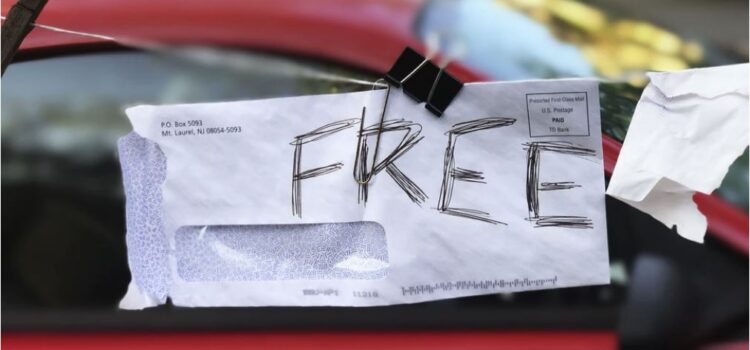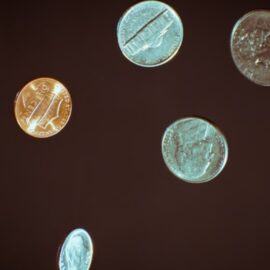

This article is an excerpt from the Shortform book guide to "Predictably Irrational" by Dan Ariely. Shortform has the world's best summaries and analyses of books you should be reading.
Like this article? Sign up for a free trial here .
Why are marketing freebies so dangerous? Why will we almost always choose “free” even if there’s a more logical option?
We are psychologically attracted to anything that’s free, that’s why marketing freebies are such powerful tools. Even attaching the concept of “free” to a purchase can trigger you to irrationally spend more money on whatever it is.
Keep reading to learn more about the power of marketing freebies.
The Power of Marketing Freebies
Marketing freebies are powerful tools because we are inherently attracted to things that are free. This is because almost every transaction has an upside and a downside. The upside is that you gain something from the transaction. The downside is that you’ve spent money and it’s possible you won’t be satisfied with your purchase.
“Free” eliminates the possibility of a downside in a transaction. There’s no risk that your money will be spent on a dissatisfying purchase. Furthermore, because the free item is upside-only, you perceive it as much more valuable than it really is. For these reasons, you’ll naturally choose a free item above all else, even when it’s not the most rational choice. The following experiment illustrates how the possibility of getting something for free can interrupt rational thought processes.
Experiment: The Chocolate Sale
In this experiment, a chocolate-selling stand was set up in one of MIT’s student centers.
- In the first part, customers had the choice between a Lindt truffle for 15 cents or a Hershey Kiss for one cent. In this scenario, 73% of the customers chose the Lindt truffle. This was a rational choice—not only was the Lindt truffle an objectively superior product but it was being offered at a very attractive price.
- In the second part, each chocolate’s price was lowered by one cent. Now, the Lindt truffle was 14 cents, and the Hershey Kiss was a freebie. Even though the Lindt truffle was still a superior product at a great price, the label of “free” on the Kisses had more power—this time, 69% of the customers chose the Hershey Kiss.
This behavior is especially interesting because it contradicts the standard economic model, which would predict that, because both chocolates were reduced in price by the same amount, there should be no difference in purchase rates. Customers would do the same simple cost-benefit analysis as when both chocolates came with a cost, and conclude that the Lindt truffle would be a far more pleasurable experience for a very small cost. However, the standard economic model doesn’t take into account the power of marketing freebies. Instead of thinking through a cost-benefit analysis, humans quickly push rational decision-making aside in favor of a transaction with no downside.
Even Attached to a Price, “Free” Works
It’s fairly common sense that when you’re presented with two products—one free and one at a price, no matter how small—that you’ll choose the free item. However, what’s less common sense is that “free” has the power to influence your choices even when you’re choosing between two products that must have a price. Just by attaching the concept of “free” to a purchase, advertisers can trigger an irrational reaction in you that benefits them, and costs you more money.
You’ll commonly see online retailers putting this in practice by offering free shipping for orders that exceed a certain amount. While free shipping may feel like a good deal, it often costs you extra money in the end. Imagine that you’re shopping on Amazon, and your total comes to $23.75. You receive a notification that you’re just $1.25 away from qualifying for FREE shipping. You add one more book to your order and successfully snag the free shipping deal. The problem? The book you added cost you an extra $11, whereas paying for shipping would have only cost you $4.
Falling Victim to “Free”
If you’re skeptical that it’s truly the idea of “free” that triggers this reaction and not just low-cost shipping, consider what happened in France when Amazon rolled out their free shipping concept. Instead of free shipping, Amazon.fr chose to offer shipping at the very, very low cost of one franc (20 cents). When the shipping was a low cost—even a negligible amount like one franc—customers acted much more rationally and made fewer impulse purchases to push their order amount to the threshold for the shipping discount.
While falling victim to the trap that “free” presents might not be a big deal on smaller purchases like books, be careful not to let it influence the way you make larger decisions, like buying a new car. Imagine you’re looking for a new car for your family—you have the choice between a sports car and a sturdy SUV. The SUV costs a bit less and rationally, is a better match for your needs. However, your salesperson mentions that the sports car comes with free oil change for four years. Triggered by the idea of getting something for free—and irrationally, thinking that these oil changes will make up the difference in cost between the two cars—you spring for the sports car.

———End of Preview———
Like what you just read? Read the rest of the world's best book summary and analysis of Dan Ariely's "Predictably Irrational" at Shortform .
Here's what you'll find in our full Predictably Irrational summary :
- How logic is failing you on a daily basis
- How to identify your irrational behaviors
- Why getting something for free can cause you to make bad decisions






